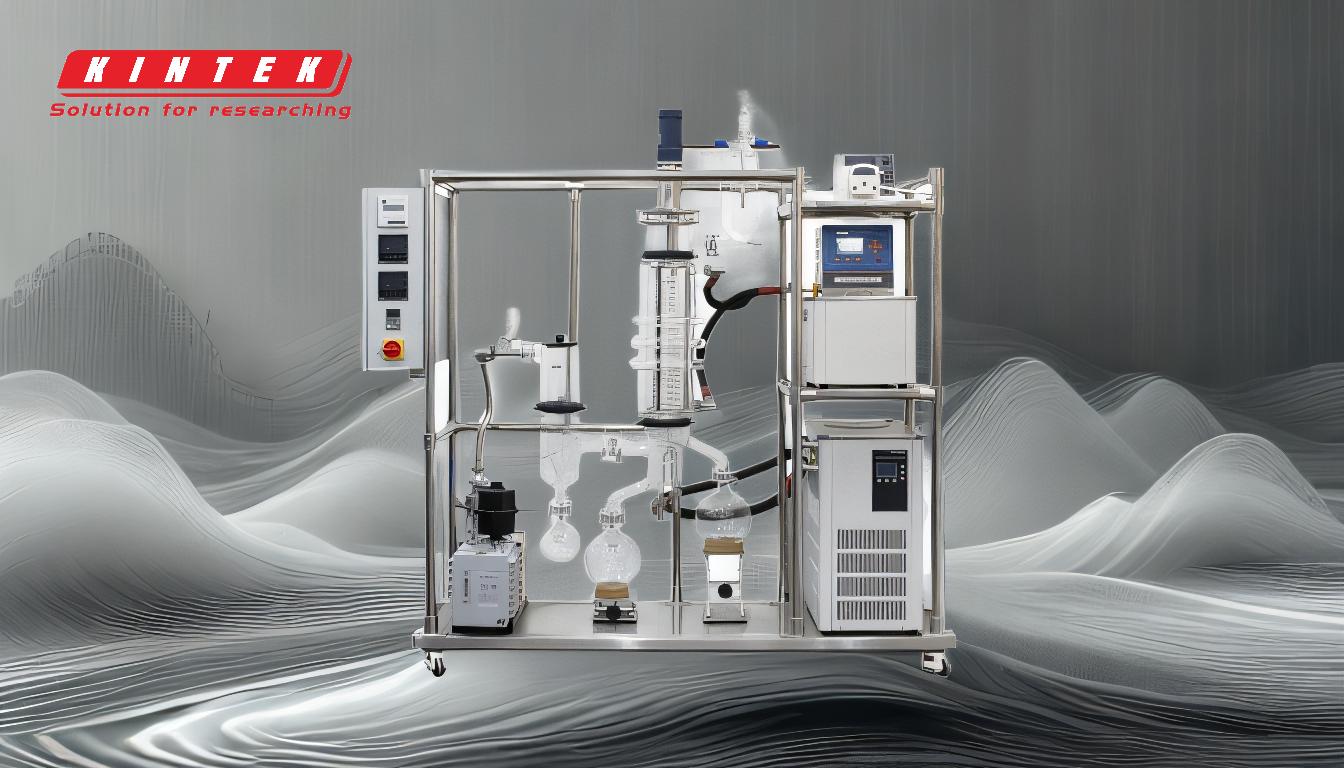Molecular distillation is referred to as high vacuum short-path distillation due to its unique operational principles and conditions. The process operates under high vacuum, which significantly increases the mean free path of molecules, allowing them to travel without collisions. The short distance between the evaporator and condenser (approximately 2 cm) ensures that molecules condense before they can collide with others, enabling efficient separation based on their individual mean free paths. This method is particularly advantageous for separating high boiling point, heat-sensitive, and easily oxidized substances, as it minimizes thermal damage and ensures high separation efficiency.
Key Points Explained:

-
High Vacuum Conditions:
- Molecular distillation operates under high vacuum, which reduces the pressure to a level where the mean free path of molecules becomes significantly longer than the distance between the evaporator and condenser.
- This high vacuum minimizes intermolecular collisions, allowing molecules to travel freely and condense independently based on their evaporation rates.
- The absence of significant gaseous phase pressure ensures that the evaporation rate is governed by molecular dynamics rather than fluid dynamics.
-
Short-Path Distillation:
- The distance between the evaporator and condenser in molecular distillation is very short, typically around 2 cm.
- This short path ensures that molecules condense on the cold surface before they can collide with other molecules, which is crucial for achieving high separation efficiency.
- The short path also reduces the residence time of the distillate in the heating zone, minimizing thermal degradation of heat-sensitive materials.
-
Low Operating Temperature:
- Due to the high vacuum, molecular distillation can be performed at much lower temperatures compared to conventional distillation methods.
- Lower temperatures are essential for processing heat-sensitive materials, as they prevent thermal degradation and preserve the quality of the final product.
- The low operating temperature also contributes to energy savings, making the process more cost-effective.
-
Short Heating Time:
- The process involves short-term exposure of the distillate to high temperatures, which further reduces the risk of thermal damage to sensitive materials.
- Short heating times are particularly beneficial for substances that are prone to oxidation or degradation when exposed to heat for extended periods.
-
High Separation Efficiency:
- Molecular distillation achieves a high degree of separation by leveraging the differences in the mean free paths of molecules.
- The process is highly effective for separating high boiling point, heat-sensitive, and easily oxidized substances, which are challenging to purify using traditional distillation methods.
- The combination of high vacuum, short path, low temperature, and short heating time ensures that the separation is both efficient and gentle on the materials being processed.
-
Applications in Industry:
- Molecular distillation is widely used in industries that require the separation and purification of thermally unstable molecules, such as the pharmaceutical, food, and chemical industries.
- It is particularly suitable for processing essential oils, vitamins, and other high-value compounds that are sensitive to heat and oxidation.
In summary, molecular distillation is called high vacuum short-path distillation because it relies on high vacuum conditions to increase the mean free path of molecules and a short distance between the evaporator and condenser to ensure efficient separation. This method is characterized by low operating temperatures, short heating times, and high separation efficiency, making it ideal for processing heat-sensitive and high boiling point materials.
Summary Table:
| Key Feature | Description |
|---|---|
| High Vacuum Conditions | Reduces pressure, increases mean free path, and minimizes intermolecular collisions. |
| Short-Path Distillation | Short distance (2 cm) ensures molecules condense before collisions, enhancing efficiency. |
| Low Operating Temperature | Enables processing of heat-sensitive materials at lower temperatures. |
| Short Heating Time | Reduces thermal damage and oxidation risks for sensitive substances. |
| High Separation Efficiency | Separates high boiling point and heat-sensitive materials effectively. |
| Industrial Applications | Widely used in pharmaceuticals, food, and chemical industries for purification. |
Interested in optimizing your distillation process? Contact our experts today to learn more!










